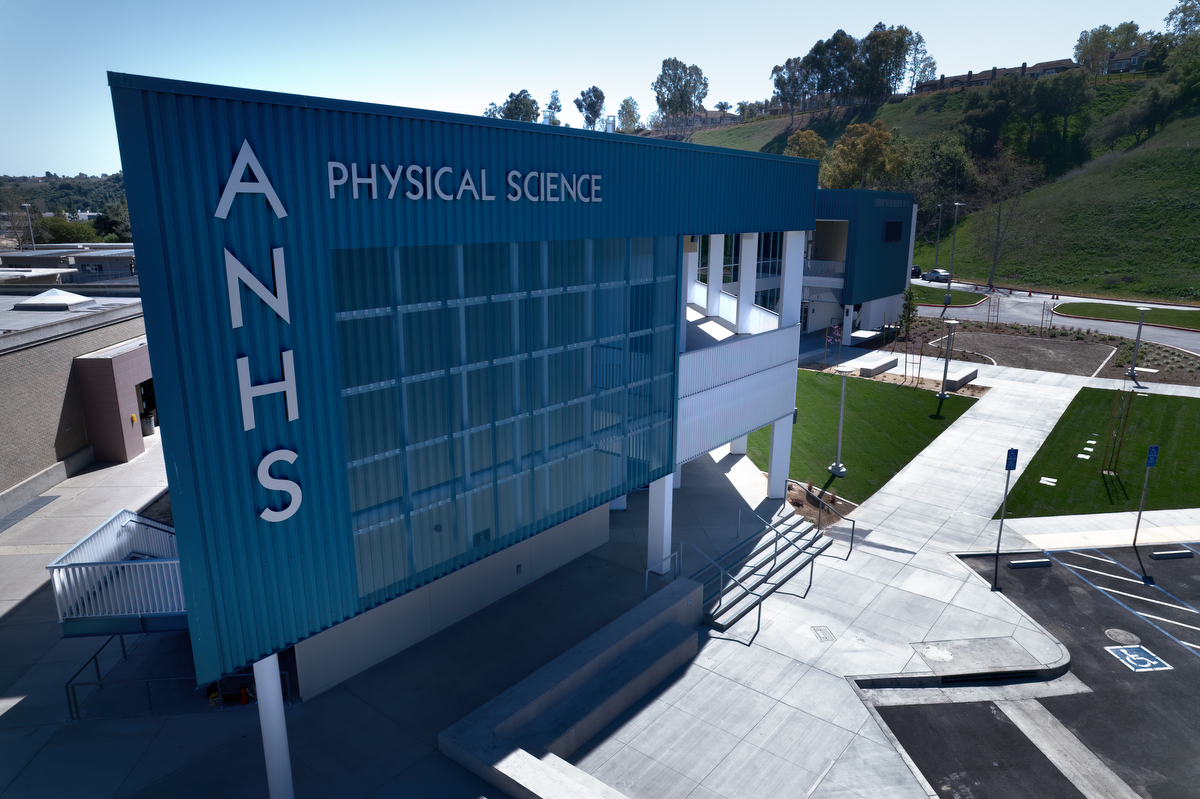District to host building open house on Tuesday, April 19 at 3:30 p.m.
By Greg Mellen
The Capistrano Unified School District has a new feather in its hat. With the completion of the new Physical Sciences Building at Aliso Niguel High School, students, particularly in chemistry and physics, have already moved in and started to dig their new digs.
“They obviously like the building,” said Aliso Niguel High physics teacher Robert Jansen. “Even the students who don’t have science are coming over.”
On Tuesday, April 19 at 3:30 p.m., the community is invited to visit the new building for an Open House to showcase the new facility.
The two-story, 20,000-square-foot, $11.5 million building is home to six new state-of-the-art classrooms that exemplify the district’s commitment to STEM (science, technology, engineering, and math) and STEAM (STEM and arts) learning. The building was funded using remaining Mello-Roos monies from Community Facilities District (CFD) 87-1.
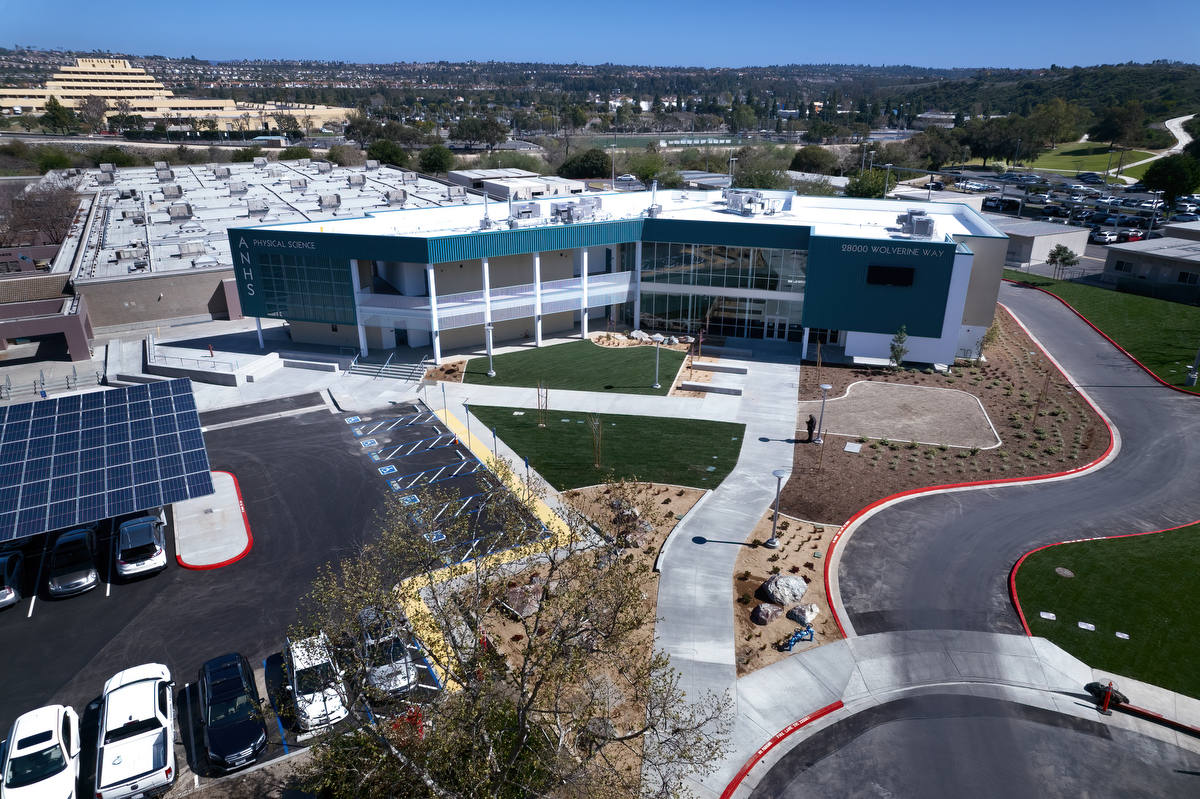
Photo by Steven Georges/CUSD Insider
“This is the new brand of learning,” said Daniel Clem, director of TELACU Construction Management, whose company is a builder for schools across the southland.
According to Clem, virtually every building his team constructs for schools has integral STEM or STEAM features.
The new Physical Sciences Building is a prime example. Four chemistry lab classrooms are outfitted with nine “peninsula” workspaces. Each has gas and sink hook-ups and room for up to 36 students per classroom. There is also a safety shower.
Teaching stations include acid waste lines for proper disposal and fume hoods, in addition to sinks and gas hook-ups. There is also a single point for gas shut off to each of the classrooms.
There are also two physics classrooms, which are approximately 400 square feet larger than traditional classrooms, with movable furniture that can allow for space in the middle of the room for experiments and demonstrations.
“Physics needs space for traveling objects,” Jansen said.
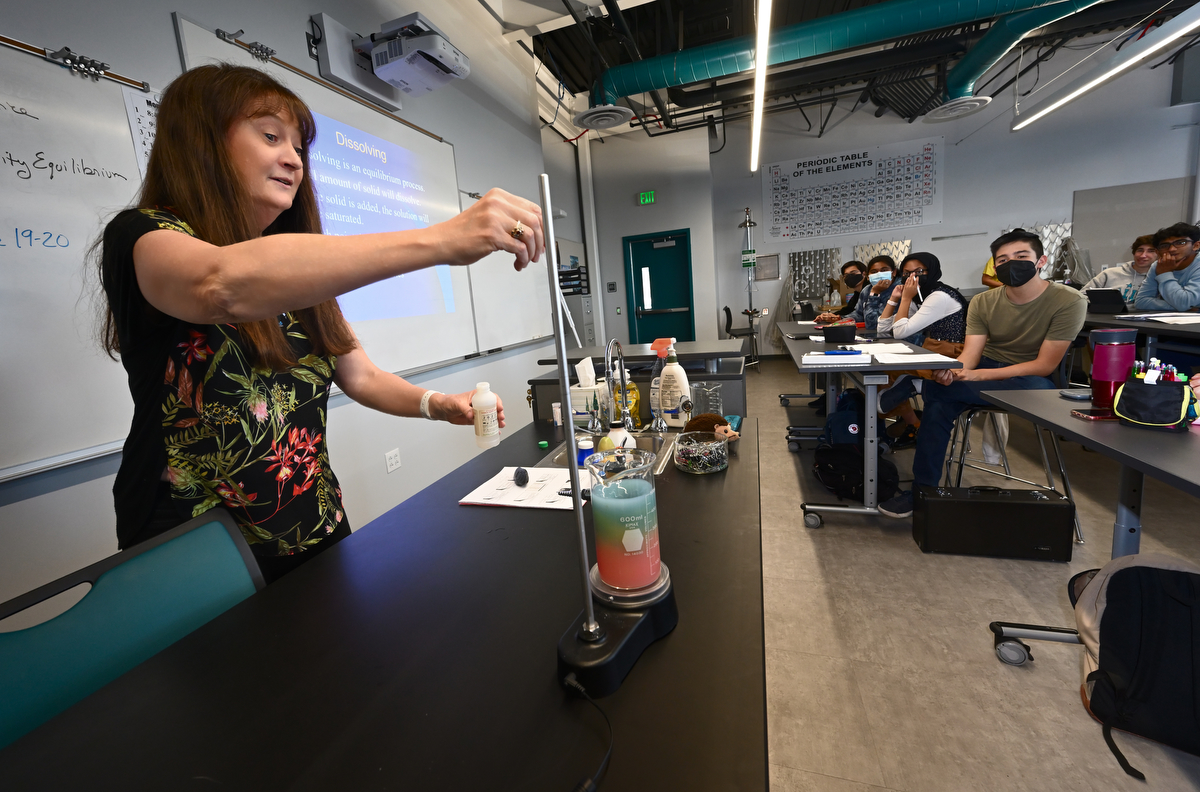
Photo by Steven Georges/CUSD Insider
The addition of lab prep rooms between the science classrooms provides space for equipment and chemicals to be stored and shared.
Classrooms are outfitted with the latest interactive “short throw” projectors and smartboards as well as WiFi bandwidth to support up to three devices per student and teacher.
The new building has had a ripple effect across the sciences on campus. For example, biology teachers have now inherited the former chemistry rooms, allowing them to have labs and equipment for the first time.
Principal Michael Hatcher said the new building has a domino effect not only in science, but across campus.
“We have 3,000 kids. It takes a lot of creativity to fit all the kids in,” Hatcher said of the school, which has 1,000 more students than when the school was built in 1993. “Now there’s no limit to the number of science classes we can offer.”
“We’ve always had a good track record in science,” Jensen said. “We’ve always had a lot of interest in science.”
Hatcher added that the new facility opens the door for more career classes such as Forensic Science and Biotechnology.
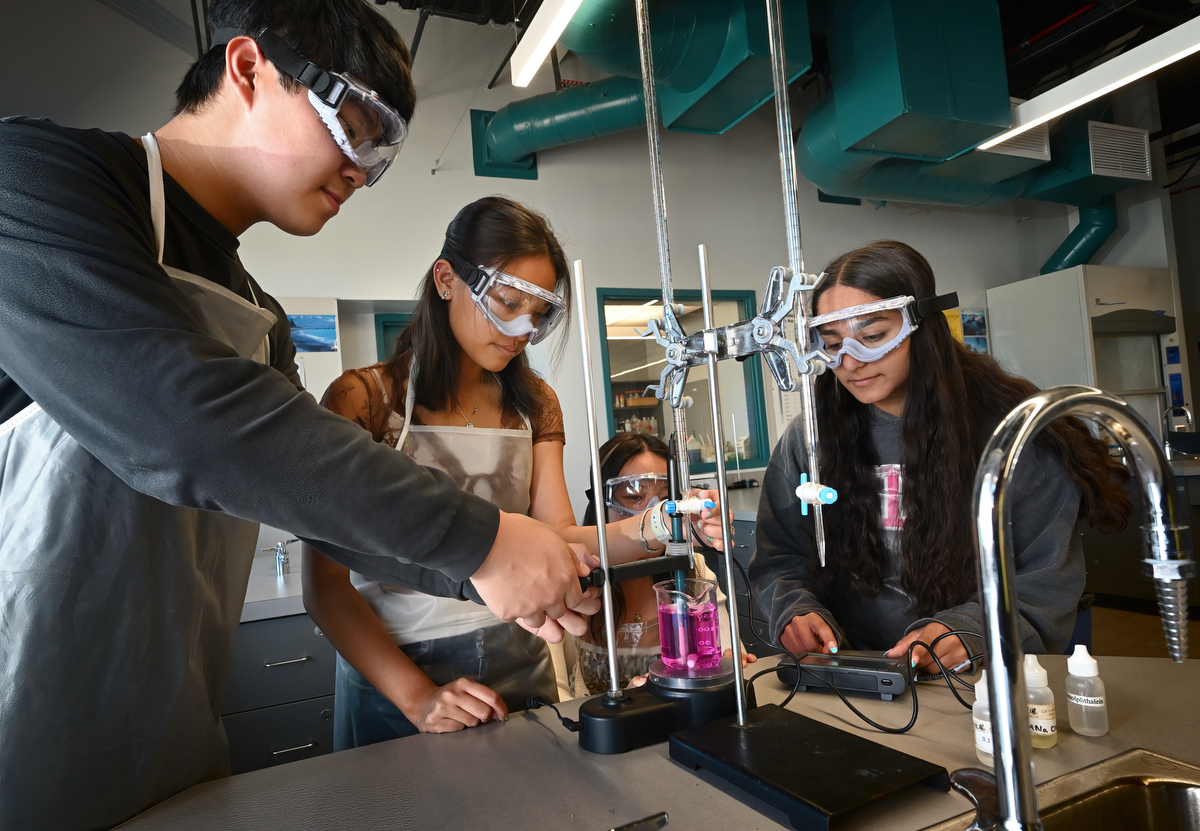
Adding to STEAM stock
The Physical Sciences building is not the only addition to Capistrano Unified. Other upgrades include:
- New and refurbished turf on sports fields at San Juan Hills High
- New modular classrooms at Esencia K-8 school in Rancho Mission Viejo
- Painting at San Juan Hills and Tesoro high schools and Las Flores Elementary
- A new K-8 is scheduled to begin construction in 2023 in Rancho Mission Viejo
- Also in 2023, Dana Hills High will have an extension built onto a classroom building
The Capistrano Unified School District has been doubling down on its commitment to STEM and STEAM teaching in recent years. In addition to the Aliso Niguel project, the district earlier built a STEAM classroom building at Newhart Middle School in Mission Viejo.
That building is a two-story, 22,475-square foot structure with 10 classrooms: six standard classrooms, one physics lab, one arts room, one science lab, and a special TV and media production room.
“CUSD has an unwavering commitment to engage all students in meaningful learning experiences in order to develop STEM-literate students who thrive in a constantly changing global community,” the district’s STEM Mission Statement reads.
In a report called the “ABCs of STEM,” the Gensler Institute, which studies optimizing academic and business settings through design, writes that successful STEM facilities engage students and use the environment itself as a teaching tool.
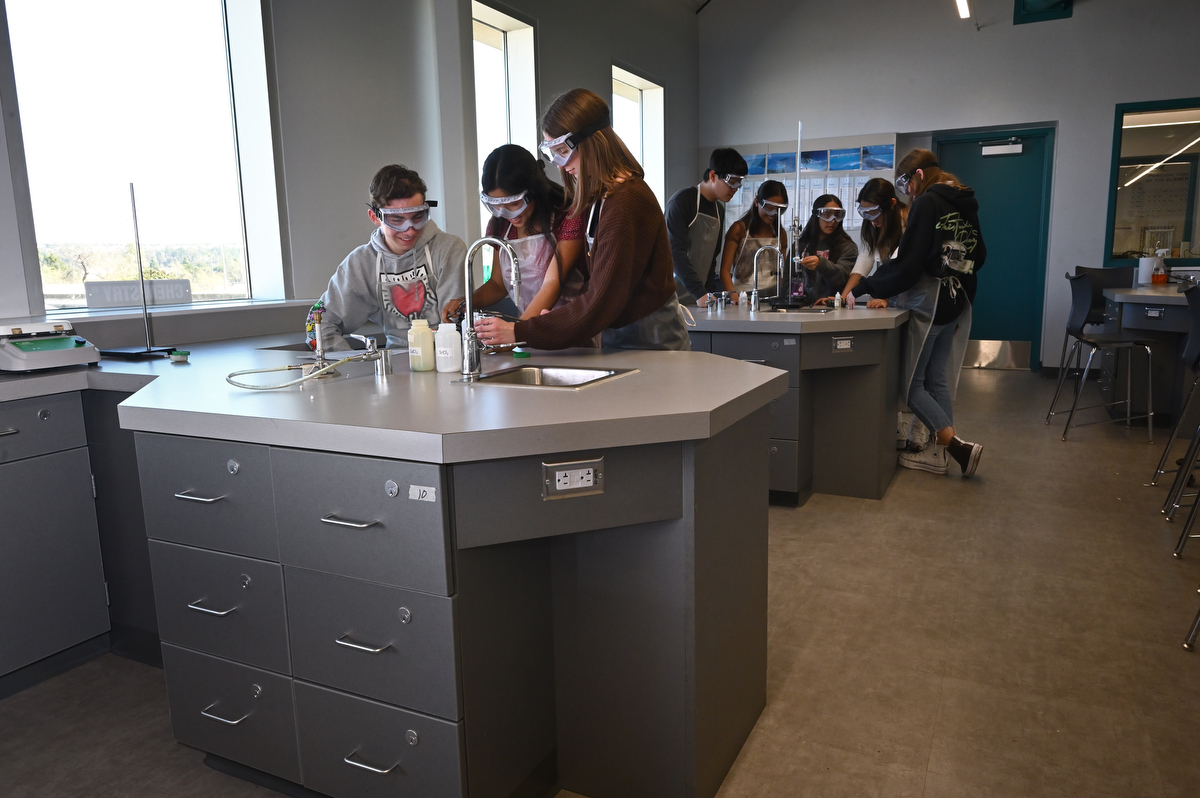
In planning the new buildings at CUSD, Clem said, “During the design process, the district and architect met with teachers to go over what they were looking for to outfit their spaces and ensure that the classrooms would stoke collaboration and engagement.”
According to the Bureau of Labor Statistics, “Jobs in the science, technology, engineering and math (STEM) fields will expand faster than non-STEM jobs, growing to more than 9 million by 2022.”
What’s in a name
Hatcher said the school is finalizing plans to name each of the classrooms after important, although often overlooked and underrepresented, scientists who have done groundbreaking work in the sciences, particularly in the fields in which the students are learning.
There will be plaques honoring the scientists and descriptions of their lives and work and the hope is that some of the aspects of their inquiry will be highlighted in the content of the class curricula.
The new building has already given a boost to the Science Olympiad team at Aliso Niguel High. In addition to written testing, the event also features real life competitions and demonstrations in physics, engineering and technology.
Teams had to design courses and construct and calibrate devices that launched projectiles onto targets and collected data. Another experiment involved launching ping-pong balls with parachutes and seeing which would stay afloat longest. The tests are filmed and winners advance to the Olympiad at CalTech.
Until recently, the team had to build and test devices outdoors and account for variables. This year, the team was able to use the lobby of the new building, and hope to qualify for the national Science Olympiad in May.
However, the new building doesn’t have to incubate science champions to be a winner. It may be enough, as Hatcher said, to “increase (students’) curiosity to take these classes.”
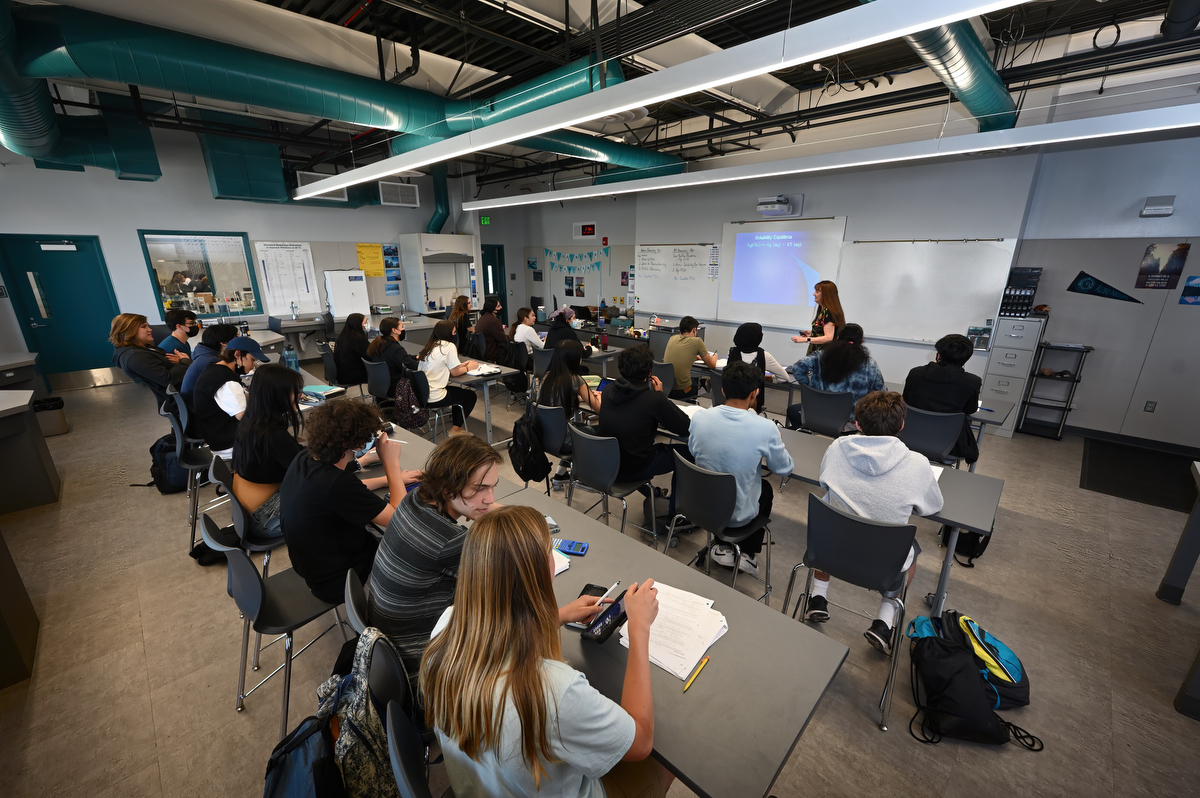
Photo by Steven Georges/CUSD Insider

